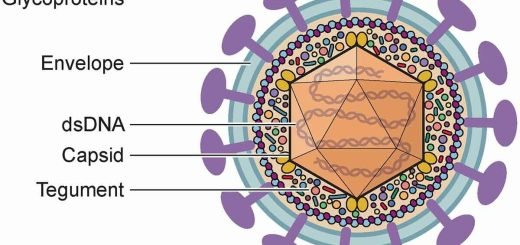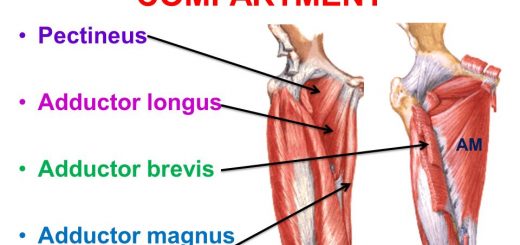Smooth muscles types, properties, function and Source of calcium ions in smooth muscle
Smooth muscle lacks the highly structured, specific neuromuscular junctions of skeletal muscle. Instead, the innervating nerve fibers, which are part of the autonomic nervous system, have numerous bulbous swellings, called varicosities. The varicosities release neurotransmitters into a wide synaptic cleft called diffuse junctions.
Types of smooth muscle
The smooth muscle of each organ is distinctive from that of most other organs in several ways: (1) physical dimensions, (2) organization into bundles or sheets, (3) response to different types of stimuli, (4) characteristics of innervation, and (5) function. Smooth muscle can generally be divided into two major types:
- Visceral smooth muscle.
- Multi-unit smooth muscle.
Visceral smooth muscle
- They are found in the walls of the digestive tract, urinary tract (ureter), genital tract (ureter), bile ducts, and many blood vessels.
- Visceral smooth muscles are characterized by their arrangement in the form of bundles (sheets), and the presence of gap junctions between the various cells or fibers.
- The cell membrane of different fibers comes in contact with each other. So once an action potential is generated in one muscle fiber, it spread to all the adjacent fibers, leading to spontaneous contraction i.e. they act in a syncytial fashion.
- It is mainly controlled by non-nervous stimuli.
Multi-unit smooth muscle
- This type of muscle is present in the muscle lining the blood vessels, ciliary muscle and iris of the eye, and the piloerector muscle that causes the erection of hairs in response to sympathetic stimulation.
- They are made of separate muscle fibers, each fiber responds independent from the other (Non-syncytial).
- This type of muscle is controlled by nerve signals from the autonomic nervous system.
Physiological properties of smooth muscle
1- Electrical properties
In the normal resting state, the intracellular potential is usually about -50 to -60 millivolts, which is about 30 millivolts less negative than in skeletal muscle. Action potentials occur in unitary smooth muscle (such as visceral muscle) in the same way that they occur in skeletal muscle. The action potentials of visceral smooth muscle occur in one of two forms:
- Spike potentials.
- Action potentials with plateau.
Spike potentials
The duration of this type of action potential is 10 to 50 milliseconds. Such action potentials can be elicited in many ways, for example, by electrical stimulation, by the action of hormones on the smooth muscle, by the action of transmitter substances from nerve fibers, by stretch, or as a result of spontaneous generation in the muscle fiber itself.
Action potentials with plateau
The onset of this action potential is similar to that of the typical spike potential. However, instead of rapid repolarization of the muscle fiber membrane, the repolarization is delayed for several hundred to as much as one second. The importance of the plateau is that can account for the prolonged contraction that occurs in some types of smooth muscle, such as the ureter, the uterus under some conditions, and certain types of vascular smooth muscle. (Also, this is the type of action potential seen in cardiac muscle fibers that have a prolonged period of contraction.
Slow-wave potential in unitary smooth muscle
Some smooth muscles are self excitatory or spontaneously stimulated, showing what is called slow-wave potential, these waves if they reach the threshold value which is about -35 millivolts it fires an action potential, giving rise to muscle contraction. The cause of the slow-wave rhythm is unknown.
Contractile process in smooth muscle
The contraction mechanism in smooth muscle is like that in skeletal muscle in the following ways:
- Actin and myosin interact by the sliding filament mechanism;
- The final trigger for contraction is a rise in the intracellular calcium ion level;
- The sliding process is energized by ATP.
The contractile unit in smooth muscle is formed from many radiating actin filaments from two dense bodies. These filaments overlap the myosin filament located between the dense bodies. Some of the membrane dense bodies of adjacent cells are attached together by intercellular protein bridges, which transmit the force of contraction from one cell to the other.
The process of attachment and detachment of actin to myosin in smooth muscle is much slower than in skeletal muscle, due to reduced ATPase activity in the myosin heads. The energy needed to sustain smooth muscle contraction is very small, only one molecule of ATP is required for each cycle, regardless of its duration.
The ATP-efficient contraction of smooth muscle is extremely important to overall body homeostasis. The smooth muscle in small arterioles and other visceral organs routinely maintains a moderate degree of contraction, called smooth muscle tone, day in and day out without fatigue.
Regulation of smooth muscle contraction by calcium ions
- Increase in intracellular calcium initiates smooth muscle contraction when it is excited.
- Smooth muscle does not contain troponin, which is activated by calcium in skeletal muscle. Instead of troponin, – Smooth muscle contraction needs another protein called calmodulin, which combines with calcium and activates the enzyme myosin kinase (myosin light chain kinase) {MLCK} leading to phosphorylation of myosin heads and its binding with actin leading to muscular contraction.
- Reduction in the calcium level leads to smooth muscle relaxation.
- All the steps are reversed except the phosphorylation step, which needs phosphatase enzyme to split the phosphate from the myosin heads.
Source of calcium ions in smooth muscle
- Calcium ions in skeletal muscle are released from the sarcoplasmic reticulum. In smooth muscle the sarcoplasmic reticulum rudimentary.
- At the time of action potential, calcium ions influxes in the smooth muscle fiber from the extracellular fluid and diffuses to all parts and muscle contraction occurs.
- Some smooth muscle contains a moderately developed sarcoplasmic reticulum that lies near the cell membrane.
- Small invaginations called caveoli in the cell membrane. which seems to replace the T-tubules system in skeletal muscle are present.
- When caveoli is stimulated by an action potential, it releases calcium from the sarcoplasmic reticulum.
- The release of calcium from the sarcoplasmic reticulum is rapid than the entry of calcium through the cell membrane, leading to rapid muscular contraction.
- For smooth muscle relaxation to occur calcium ions must be removed by the calcium pump, which pumps calcium to the extracellular fluid or to the sarcoplasmic reticulum.
- The calcium pump in smooth muscle is much slower than in skeletal muscle, so the process of contraction takes a long time.
Leg nerves types, Injuries of nerves of the lower limb & Sciatica causes
Leg structure, muscles, nerves, bones, anatomy & function
Popliteal fossa structure, Skeleton of the leg, Shaft & Joints of tibia
Structure of skeleton of the foot, Tarsals, Metatarsals and Phalanges



